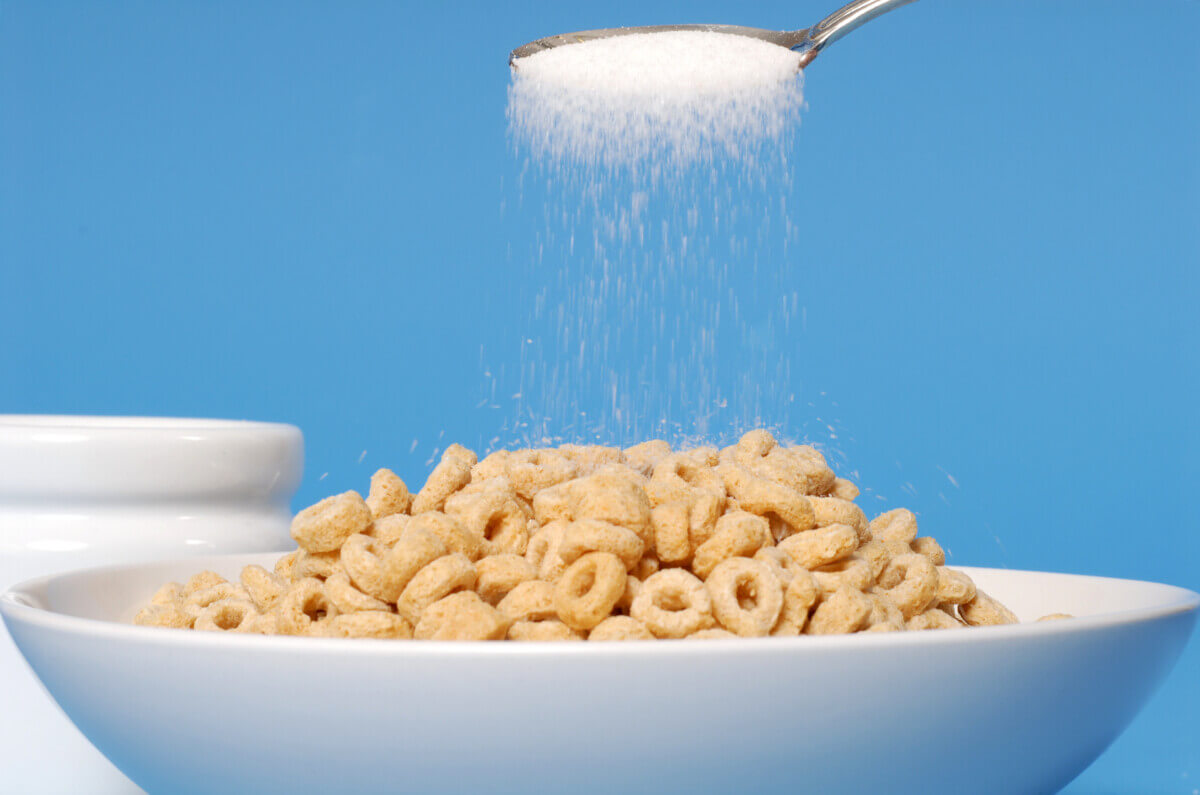
(© minoandriani - stock.adobe.com)
The World Health Organization (WHO) has declared that aspartame, the most popular and most prevalent artificial sweetener, should be considered “possibly carcinogenic to humans.” What does this mean for the countless people who use this product every day? Let's take a look at the health implications of this ruling and all the other sweeteners out there as you decide what should or should not be a part of your diet.
The U.S. Food and Drug Administration (FDA) notes that common brand names for aspartame include “Nutrasweet,” “Equal,” and “Sugar Twin.” The sweetener is found in about 6,000 products, such as diet sodas and other beverages, chewing gum, medications, toothpastes, candy, foods such as pudding and gelatin, and many others.
While the WHO ruling is concerning, the FDA says that aspartame users do not need to worry about it causing cancer or need to change their consumption of the sweetener. The WHO designation means that the International Agency for Research on Cancer (IARC), a division of the WHO, reviewed research that shows that there may be a link between aspartame and liver cancer. However, the report stops short of declaring that the association is certain or causative.
A separate WHO committee did a risk assessment on aspartame and reported that the WHO’s guidelines for aspartame use do not need to change. The WHO statement of findings claims that the designation is not to scare or confuse the public, but to encourage scientists to continue studying a possible link between aspartame and cancer.
The FDA Responds
Numerous regulatory agencies, including the FDA, have repeatedly stated that aspartame is safe for human consumption if used according to certain guidelines.
“Aspartame being labeled by IARC as ‘possibly carcinogenic to humans’ does not mean that aspartame is actually linked to cancer,” FDA officials write in their response to the WHO.
FDA scientists reviewed the scientific information included in IARC’s review in 2021 when it was first made available. They found “significant shortcomings” in the studies IARC used to reach its conclusion.
“FDA scientists do not have safety concerns when aspartame is used under the approved conditions,” the FDA adds.
Just what is aspartame?
Aspartame is used more than any other artificial sweeteners in the world. It is about 200 times sweeter than table sugar, so products do not need as much of it. A packet of NutraSweet in your coffee will add about four calories, and taste as sweet as two teaspoons of sugar would taste, at 32 calories.

Aspartame’s history
The FDA approved the use of aspartame in 1974, for some foods and beverages, but the decision was suspended for a few years because some scientists were concerned when an early animal study showed that aspartame may have caused brain tumors in rats.
In 1981, after a rigorous investigation, the FDA allowed the sale of aspartame in dry foods.
Aspartame guidelines
Also in 1981, the FDA/WHO Expert Committee on Food Additives established guidelines for an acceptable daily intake of aspartame.
The WHO currently recommends a daily maximum of forty milligrams of aspartame per kilogram of body weight. That is unchanged from their original guidelines in 1981. The FDA, in 1983, set their guideline at 50 milligrams per kilogram of body weight per day.
Diet sodas contain about 100 milligrams of aspartame per can. With the WHO recommendation, an adult with the American average bodyweight of 184 pounds could consume up to 33 cans per day and stay within the limits. The greater U.S. recommendation would allow more than 40 cans for the same person.
“The main conclusion of the panel was that there is no convincing evidence from experimental or human data that aspartame has adverse effects after ingestion, within the limits established by previous committee, which is the acceptable daily intake of 40 milligram per kilogram body weight. So basically, the committee reaffirmed the acceptable daily intake level of zero to 40 milligrams per kilogram body weight,” says Dr. Francesco Branca, director of WHO’s Department of Nutrition and Food Safety.
Rather than making a choice between drinking diet soda or full-sugar soda, Branca states that there is a third option, not because of concern about cancer, but concern about obesity.
“If consumers are faced with a decision on whether to take cola with sweeteners or one with sugar, I think there should be a third option considered, which is to drink water instead,” Branca says.
It is important to limit the number of sweet foods and beverages people eat, regardless of real or artificial sugar, the doctor adds. Branca emphasizes that this is especially important for young children, who consume too many sweetened products, according to prior studies.
Why do people use artificial sweeteners?
Some people choose sweeteners other than sugar to cut down on the number of calories they consume or for a variety of other reasons.
Sweeteners such as aspartame, sucralose, and stevia-derived substances, for example, are widely used ingredients in foods and beverages marketed as “sugar-free” or “diet.” These are called sugar substitutes. They are usually many times sweeter than sugar, so only small amounts are used. The substitutes add only a few or no calories to the foods and beverages they sweeten, and generally do not raise blood sugar levels.

Are there regulations on using sweeteners?
In the U.S., sweeteners and other food additives must be safe for consumption under the federal Food, Drug and Cosmetic Act.
A company that wants to market a new food additive — or wants approval for a new use of an already approved product — must obtain approval from the FDA. The agency determines the safety of a product or use based on the latest available science. The agency also establishes an acceptable daily intake (ADI).
Under the law, an additive does not have to go through the FDA’s approval process before marketing if the use of the ingredient is “generally recognized as safe” (GRAS) by qualified experts. An additive that is designated GRAS must meet the same safety standards as an FDA-approved food additive.
Approved sweeteners
Six sweeteners have been approved by the FDA as food additives. They vary from 200 to 20,000 times sweeter than sugar.
- Aspartame: Approved in 1974. Brand names are Equal, Nutrasweet, and Sugar Twin.
- Acesulfame potassium (Ace-K): Approved in 1988. Brand names are Sweet One and Sunnett.
- Sucralose: Approved in 1998. Brand name is Splenda.
- Neotame: Approved in 2002. Brand name is Newtame.
- Advantame: Approved in 2014. Brand name is Advantame.
- Saccharin: Regulated as a food additive since 1977. It was discovered and used in 1879, before approval was required. Brand names are Sweet and Low, Sweet Twin, Sweet ‘N Low, and Necta Sweet.
People with a rare genetic disorder called phenylketonuria (PKU) should avoid or restrict aspartame. It contains an amino acid called phenylalanine, which builds up in people with PKU, because their bodies have a hard time processing it. Newborns are routinely tested for PKU using a “heel-prick” test before they leave the hospital.
Foods containing aspartame must include a statement to inform people with PKU that the product contains phenylalanine.
Are there plant-based sweeteners?
In addition to the six sweeteners approved as food additives, uses of three other sweeteners are generally recognized as safe. They are made from plants and, like the approved food additives, are many times sweeter than sugar. They are:
- Steviol glycosides (purified extracts) from the stevia plant. Brand names are Truvia®, PureVia®, Enliten®.
- Extracts from monk fruit (also known as Swingle fruit or Luo Han Guo). Brand names are Nectresse®, Monk Fruit in the Raw®, PureLo®.
- Thaumatin, proteins from the West African Katemfe fruit. The brand name is Talin®.
What are sugar alcohols?
Sugar alcohols are another type of sweetener. These are as sweet, or less sweet, than sugar and are slightly lower in calories. Examples include sorbitol, xylitol, lactitol, mannitol, erythritol, and maltitol.
Sugar alcohols are carbohydrates that are like sugar and alcohol (not the type of alcohol found in alcoholic beverages). Sugar alcohols do not promote tooth decay or cause a sudden increase in blood glucose. They are used primarily in sugar-free candies, cookies, and chewing gums.
Sugars with different metabolism than traditional sugars
Other ingredients you may find on the food label are sugars that are metabolized differently than traditional sugars like sucrose.
While these sugars meet the chemical definition of a sugar, they are used by the body (metabolized) differently than traditional sugars. D-allulose (also referred to as D-psicose), D-tagatose, and isomaltulose are generally recognized as safe.

These sweeteners are considered safe for their intended uses, but some people may have a particular sensitivity or adverse reaction to any food substance. Talk with your health care provider if you are concerned about a negative food reaction.
The FDA encourages people to report any adverse events through MedWatch, the FDA’s safety information and adverse event reporting program.










